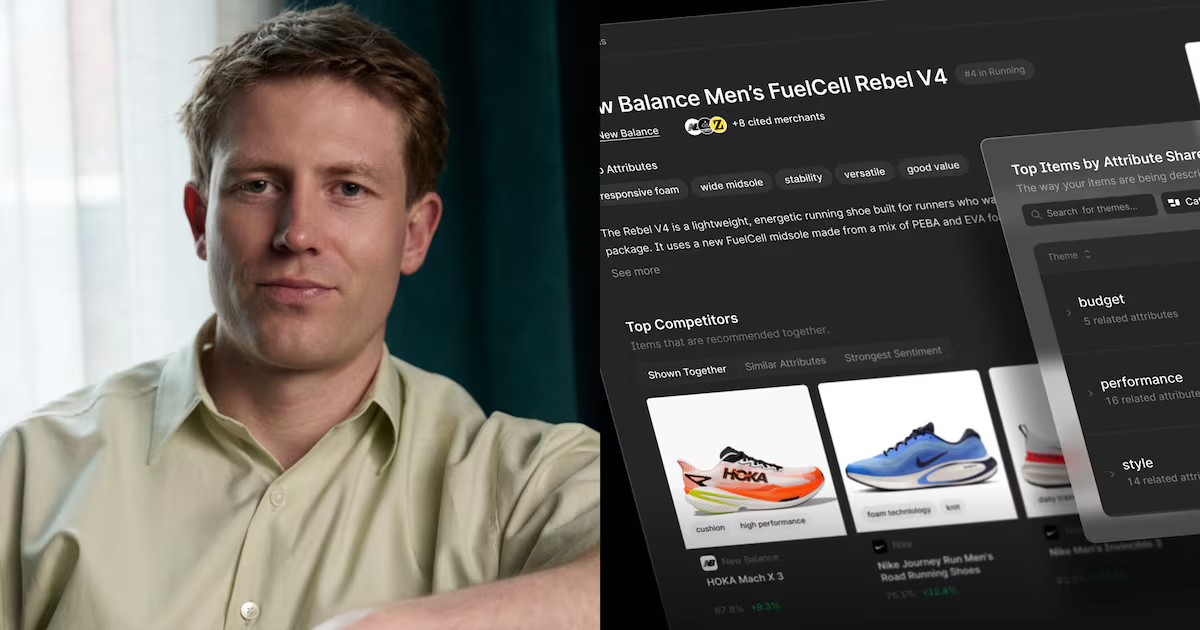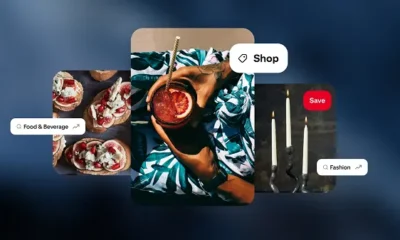SEO
A Day in the Life of a Content Marketing Manager

As the founder and lead Content Strategist at my own content company and an Associate Director of SEO at a global agency, my day is filled with content marketing activities.
From content topic ideation to production to campaign management, I work with clients to run their content marketing from start to finish. This includes SEO auditing and strategy, as well as reporting on the results of content campaigns.
Thinking of getting into content marketing?
Here’s a realistic day in the life of a content marketing manager.
7:15 a.m.
My alarm goes off at 7:15 a.m. and again at 7:30 a.m.
I’m an early riser, but any attempt to oversleep is interrupted by my tiny dog, who insists I wake up no later than 7:45 a.m.
On a typical day, I check Slack to ensure there are no urgent problems and then peek at my Google Calendar to review my meetings for the day.
Typically, my first meeting is my team’s “AM Standup.” On other days, there might be an 8:00 a.m. meeting with our partners on the east coast.
7:45 a.m.
Fortunately, today there are no early meetings or fire drills to address.
I leash my pup, Max, and take him out on his morning walk. I either whip up an iced coffee at home or trek to a local coffee shop for my typical order: a 12 oz iced mocha with whole milk.
I scroll through my Gmail to find upcoming tasks for the day, meeting requests, client questions, and finance forms to fill out.
8:15 a.m.
Most of our agency’s employees work remotely, so I take my calls from home.
I’ve invested in a standing desk to avoid the dreaded “tech neck” and an ergonomic mat to relieve my feet throughout the day. Sometimes, I work on the couch with Max sitting beside me.
Our typical deliverables are SEO audits, SEO content briefs, landing page copy, blog copy, presentation decks, and technical recommendations (for developer teams via Jira).
I usually dedicate my mornings to checking on the status of upcoming projects and delegating deliverable updates to our operations manager.
9:00 a.m.
I check Slack again and see an email from one of our strategists requesting that we establish a standardized “way of working” with one of our clients to streamline new content requests and avoid miscommunication.
We hop on a Google Meet call to chat through an email draft I’ve put together outlining our recommended process and outstanding questions we have for the client team.
I recommend that they send all new requests via email and provide an explanation of the request, the preferred deadline, and any related materials we might need to fulfill the request.
Much of what I do as a content marketing manager is trying to establish more streamlined processes.
This might include finding more efficient ways to process new requests, more cost-effective ways to produce quality content, or faster ways to create deliverables.
Our operations manager often works at my side to create standard operating procedures (SOPs) and templates, set up automation, and source talent.
9:15 a.m.
This time kicks off our daily standup meeting with the other associate director, senior strategists, and operations manager. It is a quick “around the horn” session to talk about what we are working on and whether anyone needs immediate help.
My primary objective for this week is to focus on new business development.
That means responding to requests for proposals (RFPs) and pitching our services to new clients – which might involve answering a prospect’s questions via a Google Sheet, or scheduling, rehearsing, and presenting our capabilities presentation.
9:30 a.m.
Asana is my go-to when it comes to project management.
Without it, I don’t know where I would be in terms of time management, deadlines, and processes. And with the help of our operations manager, we have finally established a process that works.
I check Asana to see if I have any tasks for the day.
I do. My tasks are as follows:
- Create 4 SEO content briefs for a client.
- Start keyword research on an app store optimization (ASO) project.
- Finish a content strategy deck to present this week.
Asana allows me to create what we call a “project plan,” which determines the tasks to be done, who will do them, when they are due, and how many hours are allocated to each task.
Since we are required to log hours for billable purposes, Asana is an effective source of truth for hours assigned and hours worked.
10:00 a.m.
Team-building is essential to creating a positive work environment.
That’s why I prioritize having weekly 1:1 meetings with my co-manager, senior strategists, and operations manager.
Today, I have a 1:1 with one of our newest contract hires, a senior strategist. She has been with our team for about three weeks and has been working on a large content optimization project.
The project has involved auditing the existing website’s content performance, determining the primary and secondary keywords for each web page, and making updates to the metadata and content of the pages that require improvements.
She relays that she has been getting along well, has been quite busy on the content optimization project, and would like to get involved in more presentation decks.
Our presentations typically present the findings from technical and/or content audits and our approach to a go-forward content strategy.
I take a mental note to have her shadow me on an upcoming content strategy project for a global ecommerce brand.
10:30 a.m.
“Content strategy” can be quite broad.
It extends to many types of content, platforms, and applications. With that, part of my job is to learn more about content strategy trends and use cases – like ASO or what I call “social SEO.”
I’ve encouraged our agency to expand our ASO capabilities by taking a performance-based lens to “app SEO.” We’ve landed a “tier 1” client who needs ASO strategy and implementation for several apps.
This project involves app search behavior research, keyword research, conversion rate optimization (CRO), and analytics.
I meet with our operations manager to draft a notes document for our upcoming client kickoff call. I review the project plan (the phases and timeline of the project) and confirm milestones/dates.
I remind the account lead that we need to add the data lead to the call.
We draft a list of discovery questions to ask the client during the kickoff meeting:
- What are your performance goals for the project?
- Is there an existing keyword strategy in place?
- Are there certain keywords you would like the app to rank for?
- Can you please describe the purpose of the app in your own words?
- What does “success” mean to you for this project?
- What are your expectations for the project?
For content projects in which we have less control over management and implementation, we like to set clear expectations at the beginning.
We may develop the strategy, but we don’t own the optimization or measurement.
We also don’t own the app’s optimization strategy, but we can help support CRO and A/B testing to make improvements over time, which might increase downloads and revenue.
11:30 a.m.
Following the internal sync is what we call “information gathering” time.
That means reviewing any of the client’s materials and organizing them in Google Drive and Asana. I also ask the operations manager to add the materials to the notes doc.
I then add and assign the following tasks in Asana:
- Research ASO tools: Find App Store optimization keyword tools that have keywords, search volume, and competition score. Provide a list of options and costs for each.
- Brainstorm seed keywords for each app (at least 10+): Review the brand materials and create a list of terms that might relate to each app; we will later validate these lists with the client.
- Version the ASO keyword & content strategy deck: Make a copy of the deck, remove all previous client mentions, use agency branding, and save the template to Google Drive.
I again reference the project plan to ensure we have enough billable hours to dedicate to these tasks. I then remind our Operations Manager to check on the tasks and let me know if she has any questions.
12:00 p.m.
I am guilty of working through my lunch break – and I’m not proud of it.
As much as I try to yield to my daily alarm to “take lunch,” usually something more interesting comes up.
So, at the very least, I’ll pop my Freshly meal into the microwave and re-pour my iced coffee. I’m not a workaholic, I swear!
(Friendly reminder that we work in marketing; rarely is a “fire drill” life or death, and most email responses can wait. Take that lunch break! )
Even though I am a manager and associate director now, I still love writing content. I still write content for many of my agency clients.
I love the process of doing research, drafting an outline, and writing the content.
Today, I am writing a blog article for one of my long-standing clients (four years!). For this client, I am assigned the topics, but I research the ideal keywords to target.
I conduct an organic analysis of the top-performing articles and create an outline that touches on the most important topics. I write the content, add internal links, and write the metadata.
Typically, I send the draft via email, ask the client to review/add feedback, and send the invoice. Sometimes, I send the invoice upfront or request a 50% deposit (for larger projects).
I only work with clients who stay on top of their invoices and value me as a strategist, not just a content writer.
1:30 p.m.
My dog walker is on vacation for six weeks. In an attempt to get me to take my lunch break and get out of the house more, I’ve committed to taking Max for a 20-minute walk myself instead of hiring a replacement dog walker.
2:00 p.m.
I meet with the leadership team to do a retro on our agency’s year-over-year (YoY) revenue growth.
The agency has undergone many changes – new team members, new ways of working, a new services model, and new processes – so it’s satisfying to see this pay off.
We make new goals for 2023, such as:
- Adopt a value-based pricing model for audits.
- Establish a “one-pager” of scoping requirements.
- Set a minimum threshold for SEO engagements (audits and ongoing servicing).
- Cancel subscriptions to unused software and tools.
- Ensure Senior Strategists are at 80% billable hours.
We create a Google Sheet that tracks all projects from 2021 and 2022, compares revenue annually, and forecasts revenue from projects “in pitch.”
We also discuss resourcing on upcoming projects: who will be working on what, whether we need to hire, and when new projects are kicking off.
3:00 p.m.
We have our “Web Analytics Weekly” call with the embed team, of one of our biggest clients.
We use this time to discuss any web analytics projects, whether we need to hire data analysts, and whether there are planned discussions for new SEO initiatives.
There isn’t much to discuss today because the client wants to table the SEO conversation until November. The other associate director is all good with the web analytics requirements and has reached a solid cadence for reporting.
We end the call a few minutes early.
4:00 p.m.
A local business client needs landing page copy for its new website build.
The client has sourced an SEO audit and strategy from another agency and employed us to write the copy. That involves:
- Creating a content tracker that keeps the client up-to-date on the status of the landing page content.
- Identifying the target and secondary keywords for each web page.
- Researching competitors to see what content they have on their service pages.
- Creating outlines for the landing pages.
- Writing one page of copy (to start).
- Sending the copy to the client for review.
We also CC the SEO agency to validate our recommendations and offer feedback on the copy.
The average turnaround time is about three days for feedback. Then, we will incorporate and edits and send it to the client for final review.
5:00 p.m.
It’s technically “after hours” for me, given that I start my day around 8 a.m.
Sometimes I schedule a bootcamp workout for 5:00 p.m. Other times, I go to the gym or aim for the 6:00 p.m. class.
Today, I check our socials to see what’s buzzing:
- A LinkedIn post about the company’s participation in the AIDS Walk LA.
- TikTok videos covering marketing trends, corporate life, Excel, and SEO.
- A LinkedIn post about revenue lost due to poor site migration.
- A Pin re-shared on Pinterest of one of our top blog articles.
- An Instagram Story about listening to today’s monthly “Marketing All-Hands.”
Sometimes I repost or respond to content; most times, I plan posts for future content.
These post ideas might make it into Asana or my daily to-do list.
For TikTok, I usually save the trending sound, screenshot the hashtags, and start a new draft.
5:30 p.m.
With the workday done, I take Max out on another walk.
We stroll around the neighborhood (it’s a sunny day), and I resist the urge to check my socials again. I use an app to schedule a last-minute Bootcamp session. I respond to my brother’s text about needing to go to the bank and attend my nephew’s soccer game on Saturday.
By this time, I usually have a weird amount of energy and want to invest in my personal projects.
Lately, it’s my fledgling ecommerce brand.
Often, it’s marketing my agency on social media to attract more clients. Sometimes, it’s writing guest articles for other websites. Since it’s Monday, I decide to enjoy the day, get a good workout in, and plan my dinner.
Conclusion
Being a content marketing manager isn’t all blog posts and social media sharing tools.
It’s management, project planning, meetings, 1:1s, breaks, and so much more. I love the variety throughout my day and being able to interface with my team.
I can’t tie “content” up in a tidy bow, but I like it that way.
More resources:
Featured Image: fizkes/Shutterstock


















You must be logged in to post a comment Login